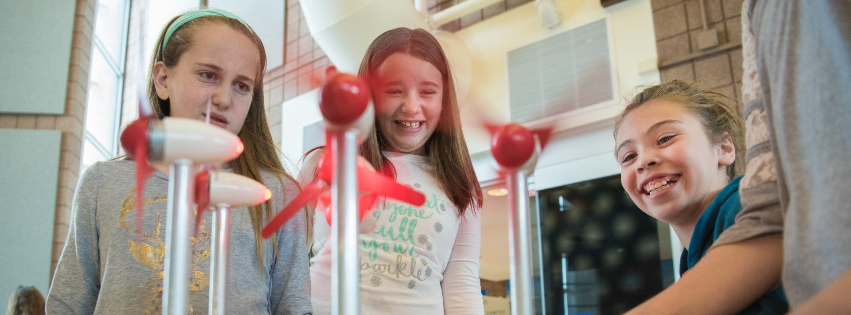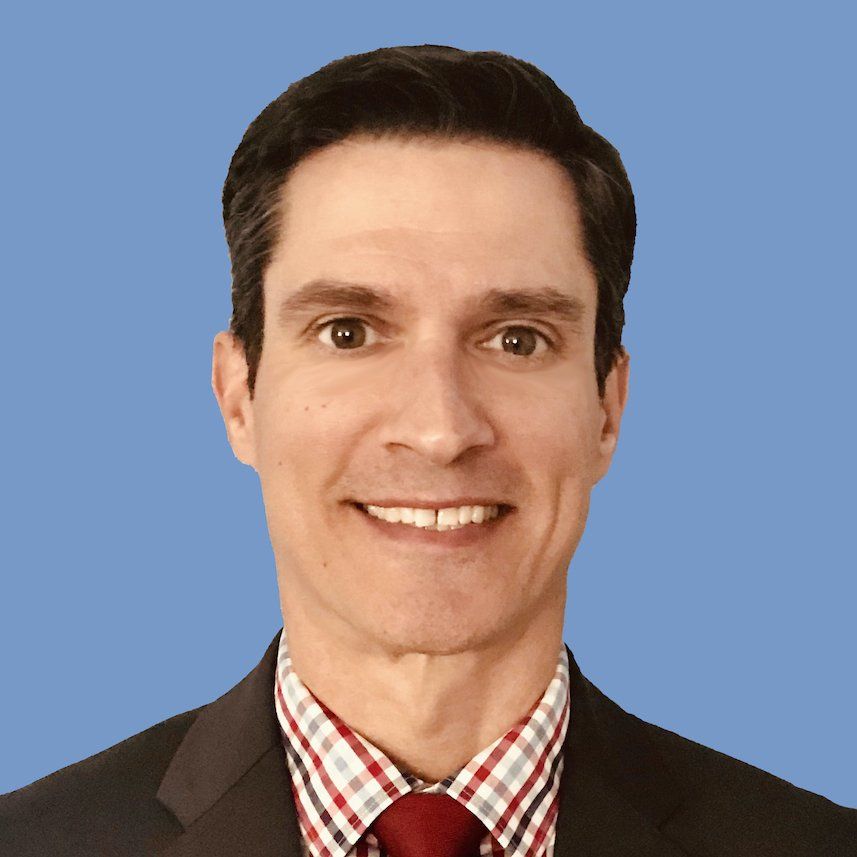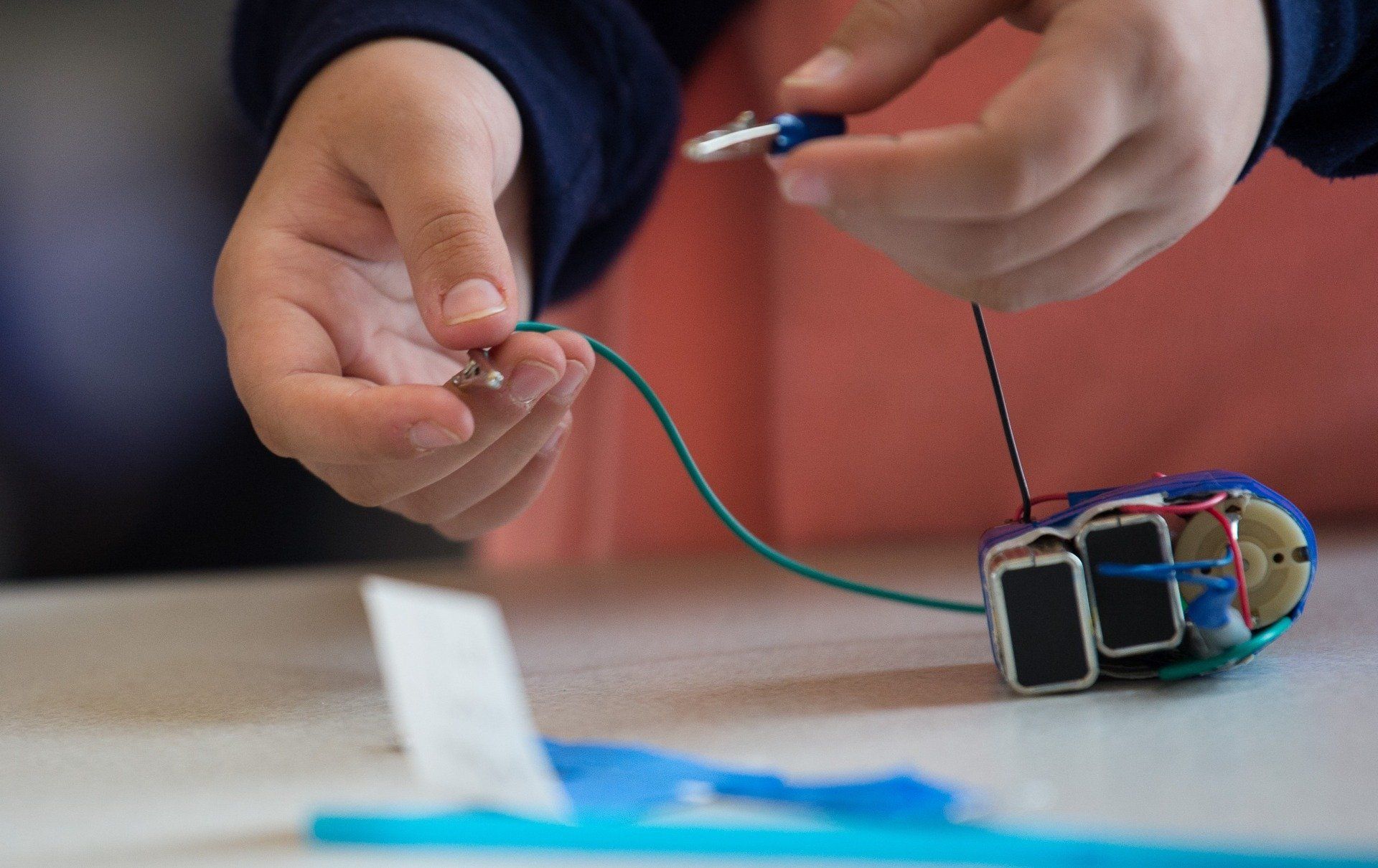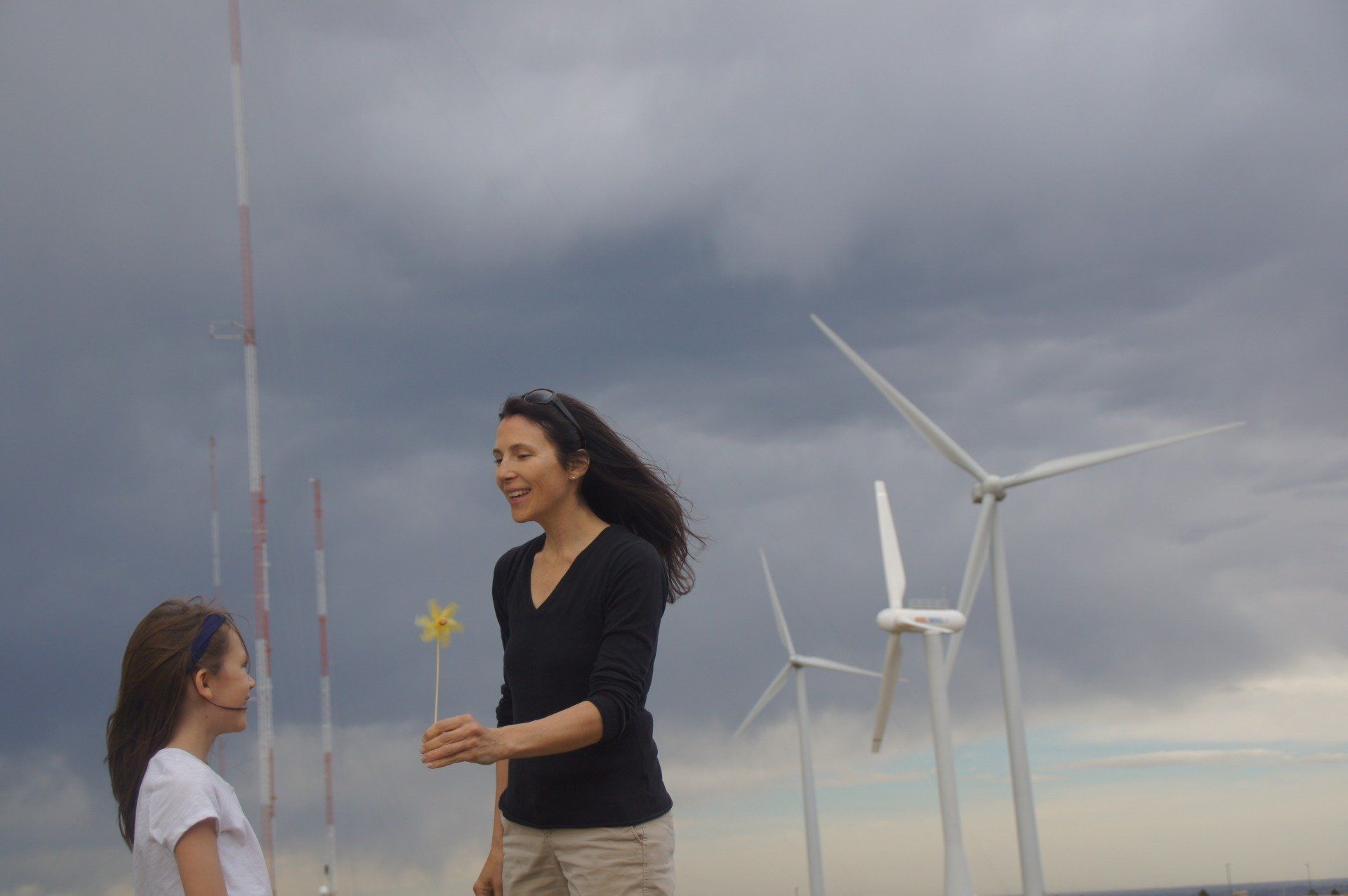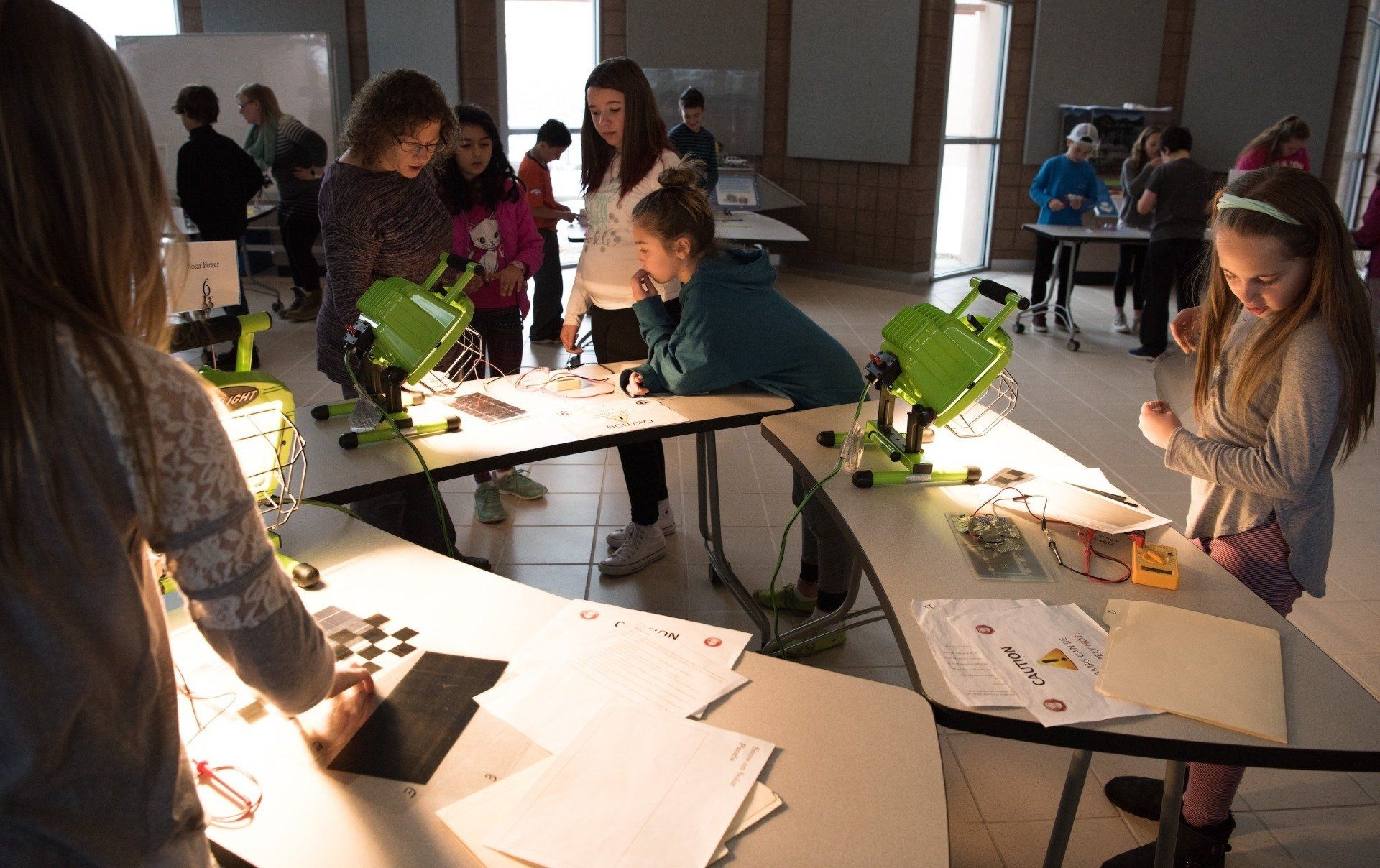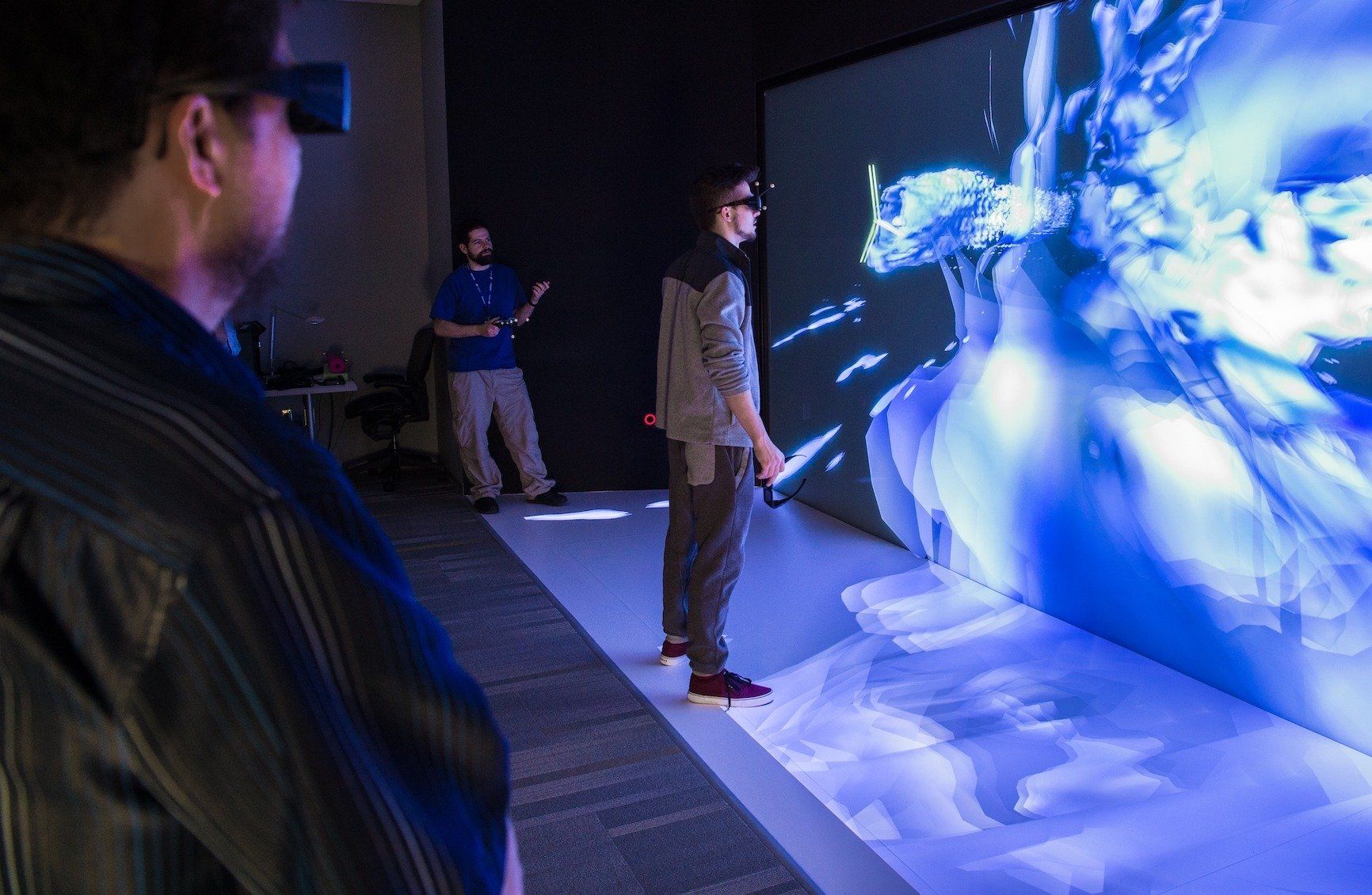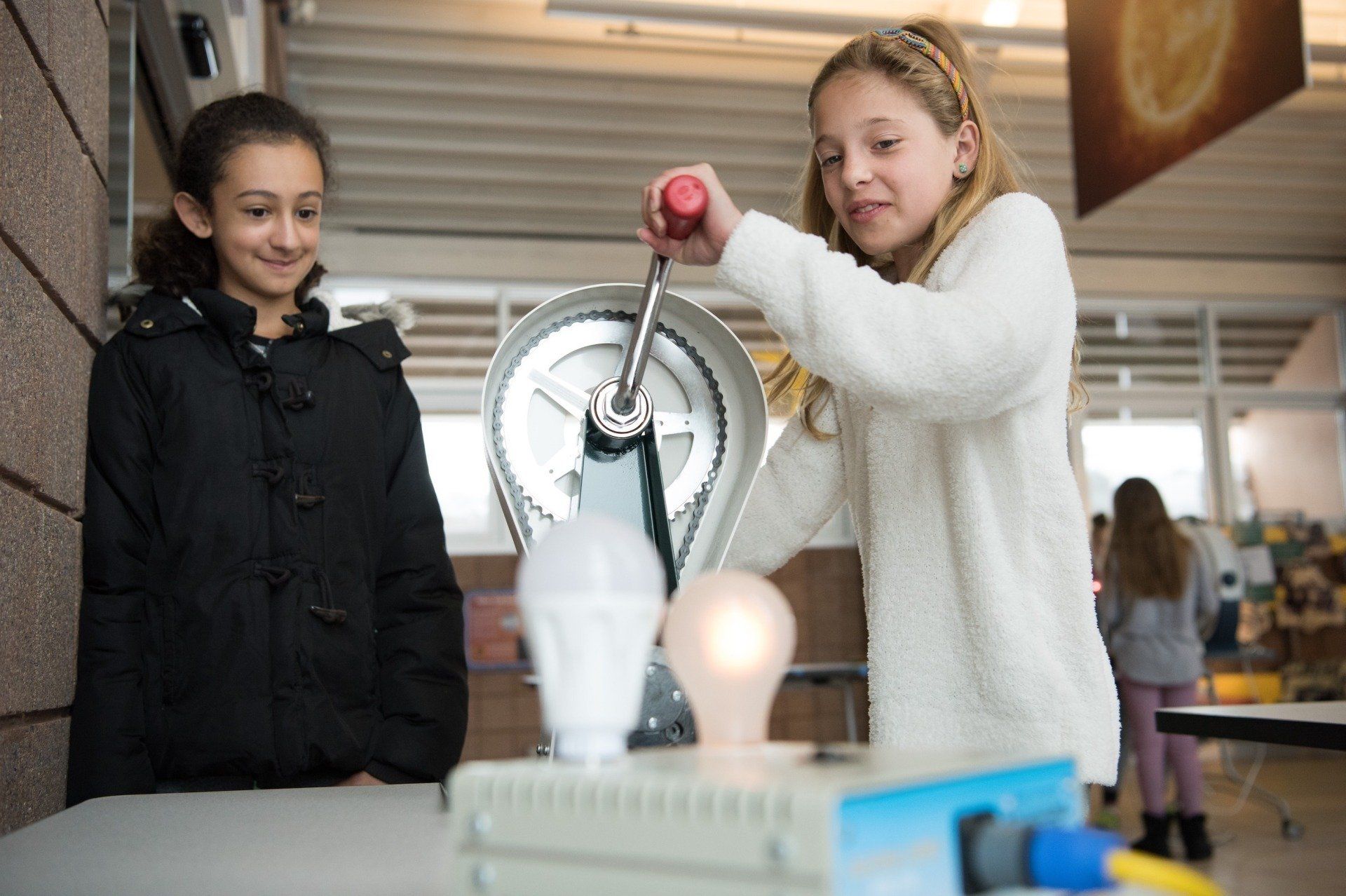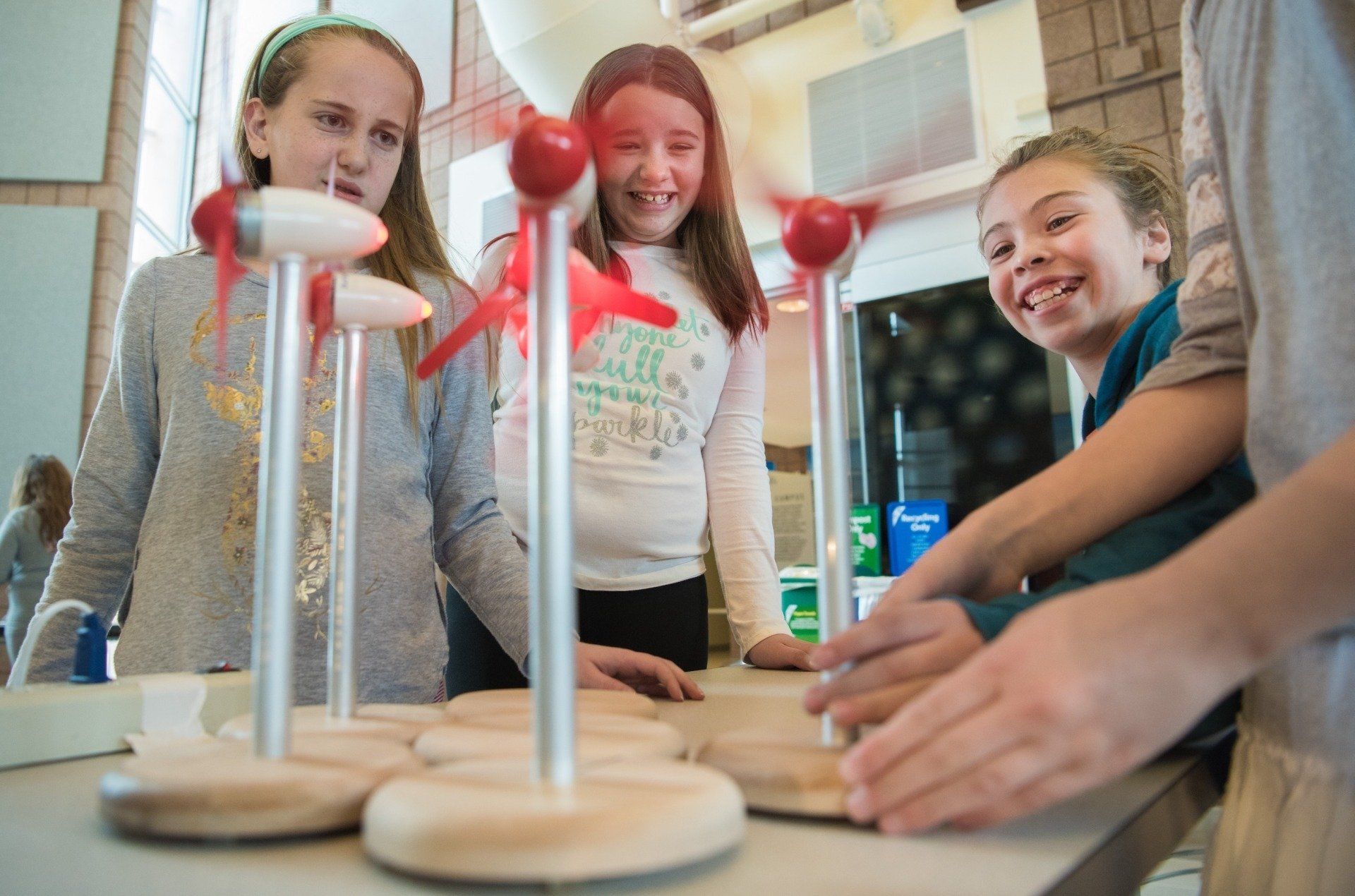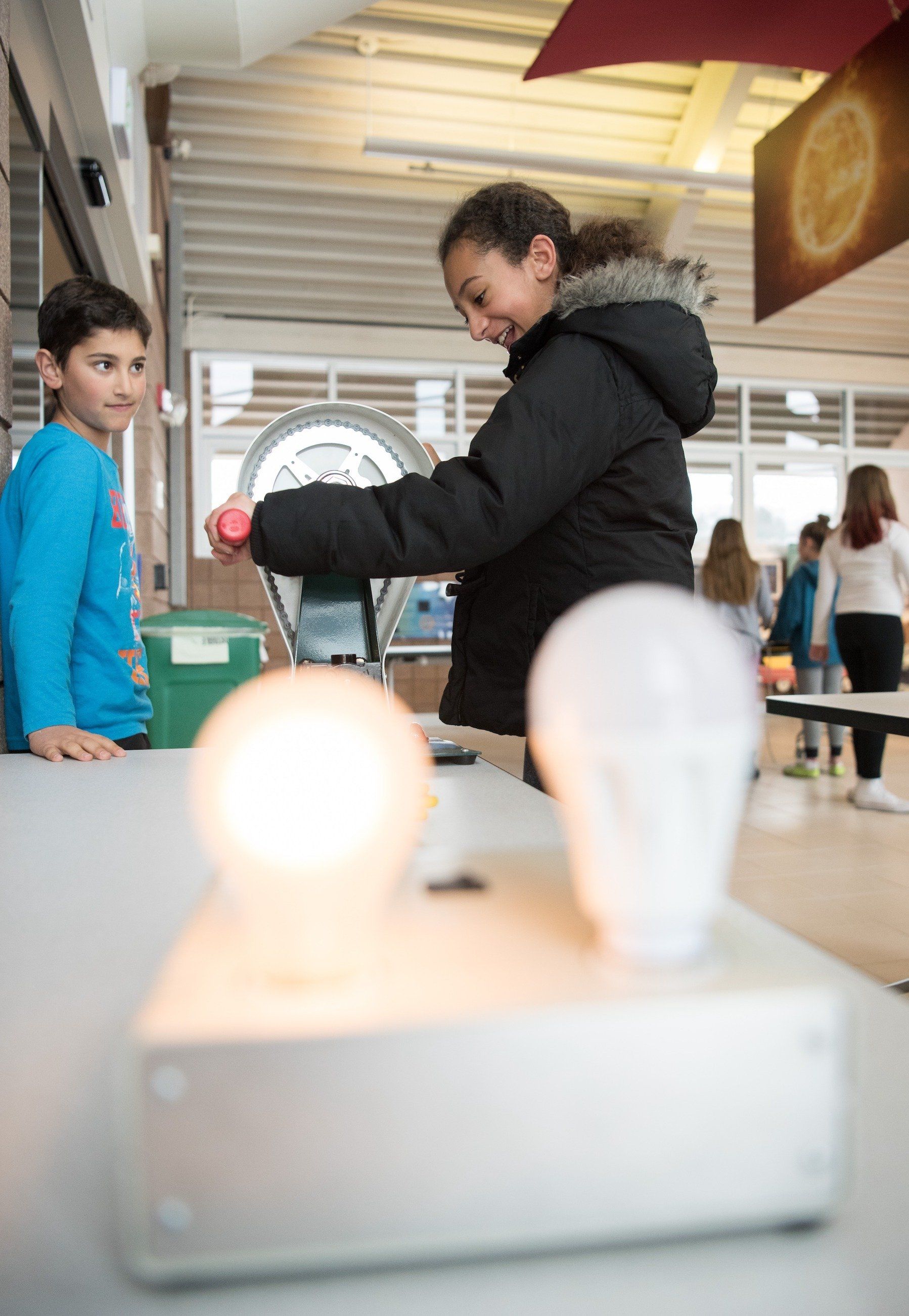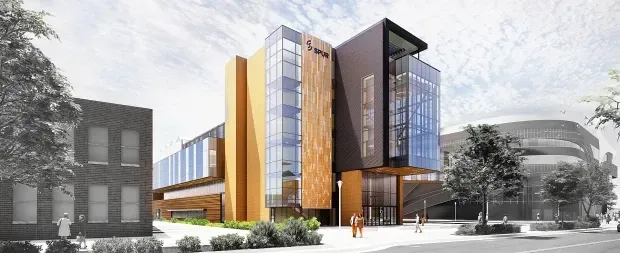Say you’re a STEM educator, and you have a national laboratory right in your community. Wouldn’t you want your students to have access to the laboratory’s ground-breaking research and world-class scientists? What fantastic role models they would be for your students, offering them a peak at the lab’s research projects and potential future careers and supplying mentoring opportunities. It would be a teacher’s dream come true. That dream is a reality at the National Renewable Energy Laboratory (NREL) in Colorado. The NREL, which is a U.S. Department of Energy facility managed by Battelle, offers many community outreach opportunities for students that give them a taste of the laboratory’s research and job opportunities. To learn more, we contacted Tom Mason, the facility’s STEM education outreach coordinator:
Experiments, competitions, STEM story time and more at the National Renewable Energy Lab
Q: Tell us about the work that takes place at the various sites of the National Renewable Energy Laboratory (NREL).
A: NREL staff members are engaged in pursuing solutions to transform the way we generate, consume, store and distribute energy. NREL provides leadership in energy efficiency and renewable energy science and technology with a focus on creating the technical foundation to support the continued evolution of an advanced energy ecosystem. Researching energy systems and technologies – and the science behind them – for a future powered by advanced integrated systems is what the lab is known for and what we do best.
Q: Now tell us, in general, about the community outreach efforts at the lab and how and why these came about.
A: Part of NREL’s mission from the lab’s inception in 1977 has been to help prepare the next generation for the jobs of the future. Through a wide variety of education and outreach programs, NREL has sought to inspire students to explore the world around them through authentic connections to NREL people, research and facilities. Our programs have helped spark the interest of underrepresented students in the science, technology, engineering and math (STEM) disciplines through culturally relevant learning opportunities with positive NREL role models.
NREL’s education programs are designed to promote excellence in teaching and learning and are intended to improve critical elements of the STEM education system. Partnerships and collaborations with education organizations support school improvement locally, regionally and nationally.
Our community outreach efforts are developed with a goal of preparing a diverse and capable workforce for the laboratory, the Department of Energy (DOE) and the nation. As part of that effort, we provide mentored research internships and fellowships for undergraduate and graduate students.
NREL’s education partnerships forged with business, colleges and universities are intended to strengthen academic contributions to DOE/NREL research and to build capacity for educational excellence in academic institutions. NREL engages partners in joint research projects, development of education programs and student internships.
Q: You have STEM-based educational programs for students, including a story time for K-3, a Virtual Experiment Series for fourth- through eighth-graders and a planned High School Summit Program (9-12). Can you tell us about these programs?
A: We have traditionally struggled to deliver accessible and age-appropriate energy-related science content to our community’s youngest students. We viewed the transition to a virtual programming format as an opportunity to address this gap. Twice a week, we invite students in grades K-3 to join an NREL staff member for a reading of a science-based children’s book, followed by an engaging and related art activity. Through their participation in “Virtual Story Time,” even the youngest students are introduced to NREL, our staff and our research.
By choosing stories that represent a wide variety of communities and individuals, children have the opportunity to see available pathways to a variety of STEM careers.
For our late elementary and middle school audiences, we provide more rigorous science and engineering content through our four-part Virtual Experiment Series. Students in grades 4-8 are introduced to using biomass batteries (using potatoes), assembling series and parallel circuits and combining energy sources to build their own electrical grid.
Teachers and students can join individual sessions, or they can sign up for the full, four-part program. We provide a limited number of kits, which contain all the materials required to participate in the program, for local schools with high percentages of students underrepresented in the STEM fields.
For high school students, we will begin offering (in early 2021) a new, collaborative opportunity to participate in our NREL Summits. Multiple classes, from different schools, will receive a research paper about a problem NREL researchers are working to solve. Students will then conduct their own background research on the topic, approaching the problem from different perspectives.
Students will hear additional details about the topic from a panel of NREL scientists and engineers who are involved in the research, and then can ask related questions. Students will break out into groups to brainstorm and propose possible solutions to the problem. After the group discussion, students will work to design and create engineering prototypes and develop plans toward additional research. The groups will then present their ideas to the experts, receive feedback and discuss ways to improve their designs and concepts.
Q: You have STEM-based educational programs for students, including a story time for K-3, a Virtual Experiment Series for fourth- through eighth-graders and a planned High School Summit Program (9-12). Can you tell us about these programs?
A: We have traditionally struggled to deliver accessible and age-appropriate energy-related science content to our community’s youngest students. We viewed the transition to a virtual programming format as an opportunity to address this gap. Twice a week, we invite students in grades K-3 to join an NREL staff member for a reading of a science-based children’s book, followed by an engaging and related art activity. Through their participation in “Virtual Story Time,” even the youngest students are introduced to NREL, our staff and our research.
By choosing stories that represent a wide variety of communities and individuals, children have the opportunity to see available pathways to a variety of STEM careers.
For our late elementary and middle school audiences, we provide more rigorous science and engineering content through our four-part Virtual Experiment Series. Students in grades 4-8 are introduced to using biomass batteries (using potatoes), assembling series and parallel circuits and combining energy sources to build their own electrical grid.
Teachers and students can join individual sessions, or they can sign up for the full, four-part program. We provide a limited number of kits, which contain all the materials required to participate in the program, for local schools with high percentages of students underrepresented in the STEM fields.
For high school students, we will begin offering (in early 2021) a new, collaborative opportunity to participate in our NREL Summits. Multiple classes, from different schools, will receive a research paper about a problem NREL researchers are working to solve. Students will then conduct their own background research on the topic, approaching the problem from different perspectives.
Students will hear additional details about the topic from a panel of NREL scientists and engineers who are involved in the research, and then can ask related questions. Students will break out into groups to brainstorm and propose possible solutions to the problem. After the group discussion, students will work to design and create engineering prototypes and develop plans toward additional research. The groups will then present their ideas to the experts, receive feedback and discuss ways to improve their designs and concepts.
Q: Do you have any other STEM-based events or programs for students now? What is on the drawing board?
A: NREL coordinates a number of competitions, challenges and industry prizes on behalf of the DOE that support the next generation of scientists and entrepreneurs. The year 2021 marks the 31st year of the Colorado Regional High School Science Bowl, which is a fun, fast-paced academic tournament that tests the brainpower of high school student teams on science and math topics. The annual science bowl allows Colorado’s top student teams to face off in a timed, question-and-answer format to test students’ knowledge in a range of science disciplines.
NREL also hosts an annual car competition for student-built solar- and battery-powered model vehicles. Each spring, teams of middle schoolers compete for the title of fastest car and best design in a fun event that reinforces some of NREL’s core principles. Teams work together to build cars with guidance from a parent, teacher or coach to compete in race and design categories.
In addition to these traditional competitions, we are researching other competitive events that represent the latest in DOE technology development, such as autonomous vehicles and cybersecurity.
NREL provides one-on-one mentors for the Northeast Early College (Denver) Coach Mentoring Program, which provides significant employee engagement and development opportunities. The year-long program matches sophomores and juniors with an NREL professional in their field of study.
Students and mentors follow a structured set of activities to help the students envision potential educational and professional paths. Underrepresented minority students make up 94% of Northeast Early College students. The Coach Mentoring Program includes school site visits as well as an NREL site visit, during which students shadow coaches and meet team members, conduct informational interviews and tour NREL laboratories and facilities.
We have a working group formed of individuals across the lab who are assessing the potential to host students on-campus as part of a high school research program. We have learned lessons from similar existing programs at other national labs and hope to have a program that meets a specific need in our local community. Along with various career panel discussions and job shadow programs, these kinds of opportunities connect students with STEM professionals and expose them to viable academic and career pathways.
Q: How has the pandemic affected your STEM-based programs and how have you altered your approach to meet these COVID-imposed challenges?
A: NREL has always created and delivered high-quality STEM education programs and has a proven track record of reaching students through a variety of programs and media. In a typical year, NREL hosts more than 2,000 students on field trips with their classmates and teachers. NREL staff members also customarily deliver energy-related content to schools through outreach programs and with booths at conferences and community events. We have continued to respond to the demand for these community-based programs through our participation in virtual events.
To continue to deliver high-quality, engaging programming, we transformed our most high-impact programs to virtual formats and developed a new program to reach even the youngest of aspiring scientists and engineers. By using innovative approaches to delivering hands-on science and engineering content, we continue to build and reinforce the reputation of NREL as a responsible community partner and a valuable corporate citizen. We also promote NREL’s scientific expertise and research impacts by engaging staff in presenting STEM education activities, which carries with it the added benefit of boosting staff morale when many in the NREL community are seeking such civic engagement.
Q: What kind of feedback have you received on your STEM programs from students and educators?
A: Students are often surprised by the breadth of the research conducted at NREL. They are impressed by the number of staff members who work in STEM-support and STEM-adjacent roles – those who make the NREL community run smoothly and operate similar to a small town. By providing unique access to NREL staff members and research, we can show students that they can be involved in a critical STEM-focused mission in a close-to-home community with international impacts.
Educators view NREL and our STEM programs as a valuable asset to the community. They realize not only that NREL is contributing cutting-edge research to the scientific community, but also that NREL is a valuable economic engine, creating good-paying jobs and generating funding for the state.
Through our programs, teachers realize that NREL provides research-based information, is home to world-class facilities and is engaged in a variety of partnerships, agreements and business development programs, as well as technology transfer, licensing and entrepreneurship endeavors.
Q: Why is NREL a good place to offer these events and programs to the public?
A: NREL is a living laboratory, where we not only “talk the talk” of energy efficiency and renewable energy technologies, but also, through investments in onsite design and building development, we “walk the walk.” Many of the high-performance buildings on NREL’s main campus have achieved Leadership in Energy and Environmental Design (LEED) and/or net-zero energy status.
Our Research Support Facility is one of the world’s largest energy-efficient office buildings, and lessons learned from its operation have been applied to more than 50 new buildings across the United States.
Colorado is the perfect home for the cost-effective design approaches that maximize the use of renewable energy technologies across a campus that serves as a model for energy use and sustainability. NREL’s main South Table Mountain campus is nestled into the foothills of the Rocky Mountains and is centrally located within the burgeoning Front Range communities, where the bulk of the state’s population resides.
Q: What advice would you give facilities like yours that might want to offer similar programs once pandemic restrictions are eased? What kind of programming would you suggest, and how might staff members get started?
A: My advice would be to start by forming partnerships with local schools and community organizations that share similar goals. Assessing the status of existing programs and identifying where gaps exist allow for the creation of programs that audiences truly need and value. The programs you offer will enable organizations to achieve their objectives and be integral to their success.
Assess the needs of your community, decide what niche you can fill to meet those needs and become the reliable, go-to expert for that content. Identify your unique strengths within the community and how you can best connect your target audience with those strengths.
Q: Is there anything else you want to share about NREL’s outreach offerings?
A: As part of the NREL community, our education team has direct access to the world’s preeminent renewable energy research base. We see our role as bridging the divide between a K-12 STEM population that desperately wants access to the knowledge generated by our research and the technologies that enable it. By serving as a conduit between these communities, who have a mutual interest in meeting each other’s needs, we provide a space where our researchers can contribute to opening up new pathways for the next generation of NREL employees.


